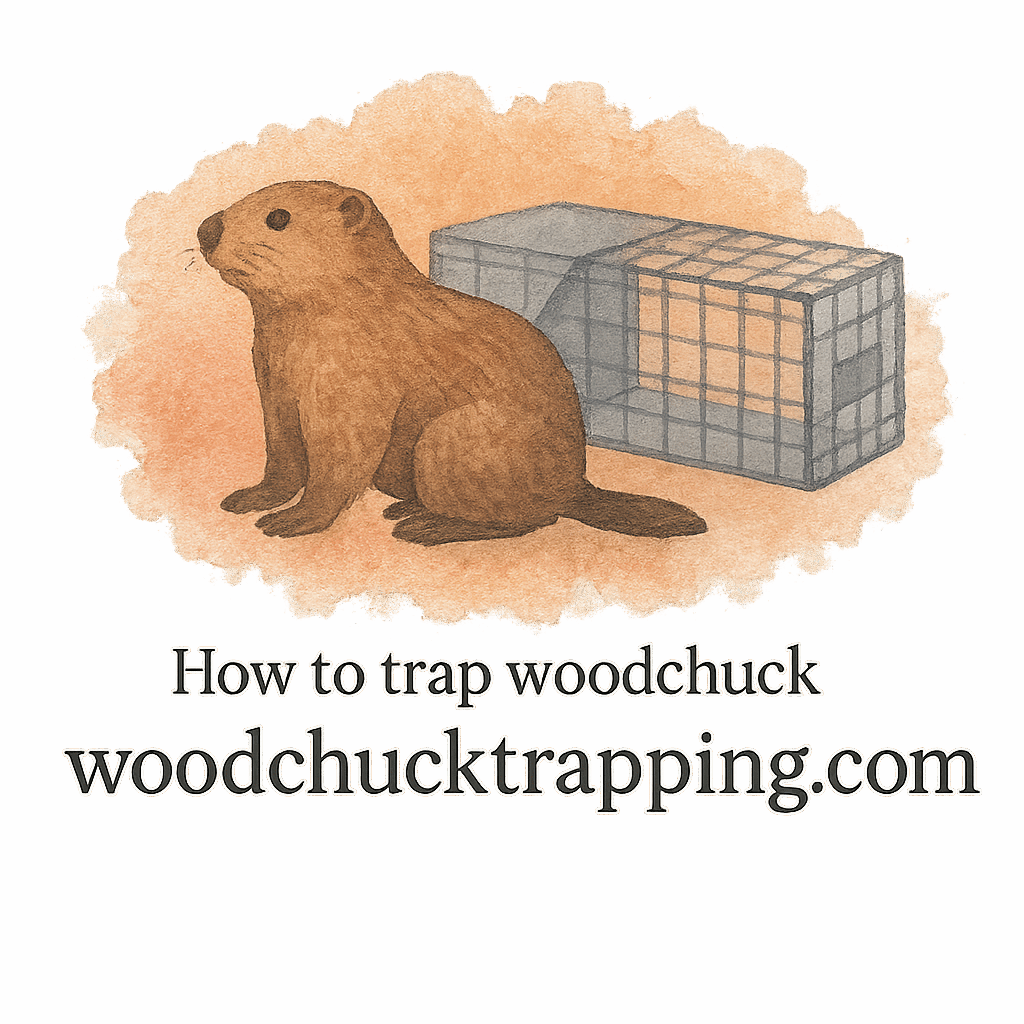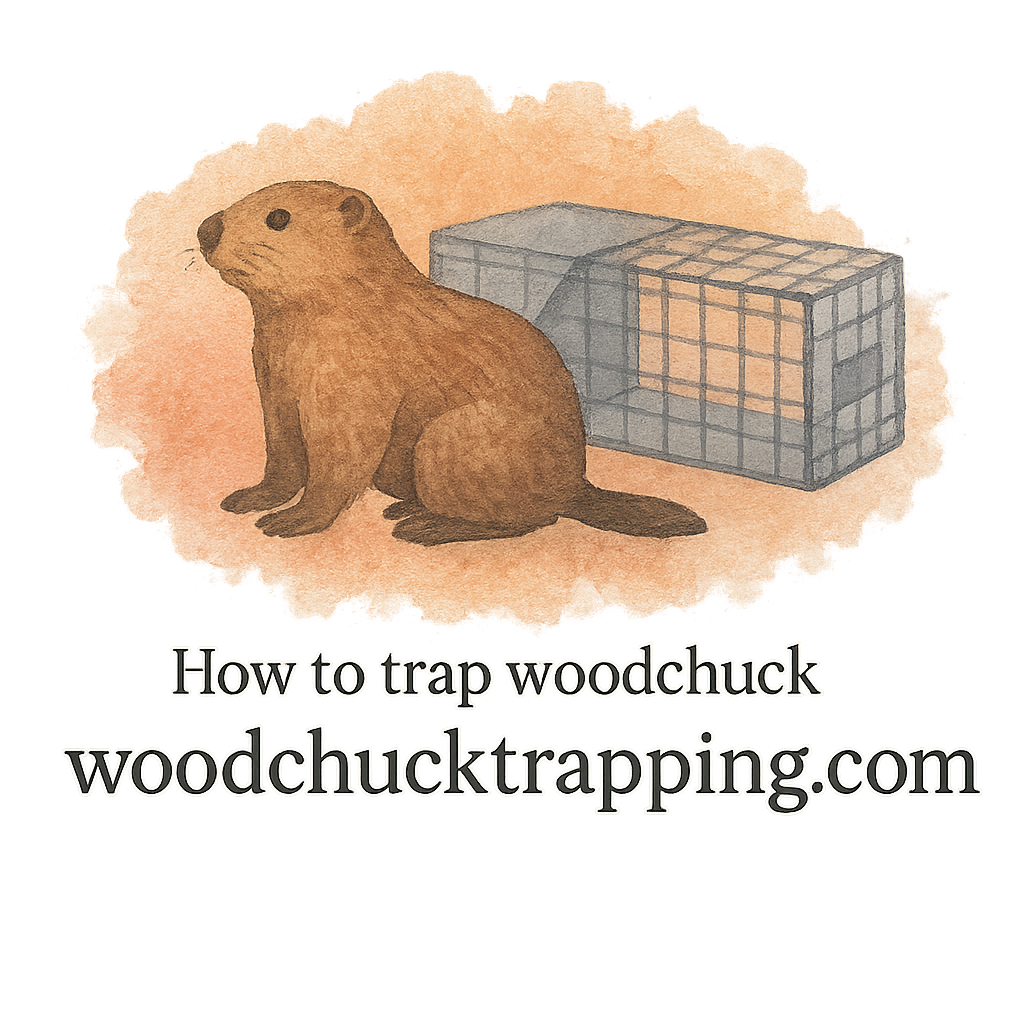Introduction: Why You Need to Ask the Right Questions
Woodchucks, also known as groundhogs, can be a real headache when they start burrowing under sheds, decks, or even your carefully tended vegetable garden. Before you jump straight into trapping, it’s smart to step back and ask yourself some key questions. Trapping isn’t just about tossing a cage in the yard—it’s about knowing the techniques, tools, safety measures, and long-term prevention strategies.
In this guide, we’ll cover the 8 most important questions to ask before trying woodchuck trapping techniques, so you can make informed choices, avoid common mistakes, and handle the situation like a pro.
Question 1: What Are the Signs of a Woodchuck Infestation?
Common signs to look for in your yard
Before you even think about trapping, confirm you actually have a woodchuck problem. Look for fresh dirt piles near holes, gnawed plants, or tunnels under your structures. These signs of woodchuck activity often reveal whether you’re dealing with a single woodchuck or an entire family.
Why recognizing signs early matters
The earlier you identify an infestation, the easier it is to manage. If left unchecked, burrows expand, structural damage worsens, and your garden can quickly turn into a buffet line.
Question 2: What Woodchuck Trapping Techniques Are Most Effective?
Traditional vs. modern methods
From basic live traps to advanced trapping techniques, the method you choose depends on your yard and comfort level. Traditional wire cage traps are effective, but modern compact designs offer more efficiency, especially in small yards.
Pros and cons of each technique
- Traditional traps: Affordable, proven, but bulky.
- Modern traps: Easier to place, especially in tight spaces, but can be more expensive.
If you’re new to trapping, check out these practical how-to trap resources for step-by-step help.
Question 3: What Equipment Do You Need for Successful Trapping?
Must-have trap gear
You don’t want to head into trapping unprepared. Essential trap gear includes the trap itself, gloves to mask human scent, and bait to attract the animal.
Choosing the right compact traps
Compact traps are ideal if you’re dealing with minimal space. For in-depth insights, browse through equipment reviews before purchasing.
Question 4: What’s the Role of Baiting and Luring in Woodchuck Trapping?
Best baiting and luring strategies
Baiting and luring are game changers. Fresh vegetables like carrots, apples, or leafy greens often work well. Learn more at baiting and luring tips.
Understanding scent bait and trap scent
Woodchucks have a strong sense of smell. Using scent bait combined with the right trap scent increases your chances dramatically.

Question 5: How Can You Ensure Safety During Woodchuck Trapping?
Laws and safety considerations
Before setting traps, check local regulations. Laws and safety guidelines differ by state, and ignoring them could land you in legal trouble.
Personal safety and handling tips
Always wear protective gloves when handling traps or the animal. Woodchucks may bite or scratch if stressed, so use humane handling techniques.
Question 6: What Should You Do Once the Animal Is Trapped?
Humane handling and relocation
Trapping isn’t the end—it’s the middle of the process. Once caught, follow humane relocation guidelines to ensure the animal is safely released in an appropriate location.
Dealing with a trapped animal safely
A trapped animal can be unpredictable. Avoid direct contact and always transport the cage with care to prevent injury.
Question 7: How Do You Prevent Future Yard Damage After Trapping?
Prevention strategies for long-term success
Trapping alone won’t solve the issue unless you also address prevention. Explore prevention and damage control strategies like fencing and sealing burrows.
Protecting gardens and small yards
Woodchucks love gardens. Use protective barriers and consider deterrents to safeguard small yards.
Question 8: When Should You Call a Professional Instead?
Knowing your limits
Sometimes, DIY trapping isn’t enough—especially if you’re dealing with multiple burrows or complex trapping essentials.
How experts handle tricky infestations
Professionals have specialized tools, experience, and legal know-how. If your woodchuck problem feels overwhelming, don’t hesitate to call in help.
Additional Tips for Successful Woodchuck Trapping
Using gloves and minimizing human scent
Human scent is a big red flag for woodchucks. Always wear gloves and avoid touching bait with bare hands.
Placement strategies for minimal space
Whether you’re working in a large field or a minimal space yard, trap placement is key. Position traps near burrows and well-used trails for best results.
Conclusion
Woodchuck trapping isn’t just about setting a trap—it’s about preparation, safety, and follow-up. By asking these 8 questions before trying any trapping techniques, you’ll not only improve your chances of success but also protect your property and handle the animals humanely. Whether you go the DIY route or call in a pro, the right approach makes all the difference.
FAQs
1. What’s the best time of year to trap woodchucks?
Spring and early summer are ideal since woodchucks are actively foraging and easier to catch.
2. Can I trap a woodchuck without using bait?
Yes, but baiting and luring improve your success rate significantly.
3. How many traps should I set for one woodchuck?
Usually one is enough, but if you see multiple burrows, set more than one.
4. Do woodchucks return after relocation?
If relocated too close, they might. Always release them far enough away, following laws and safety rules.
5. Are there humane ways to keep woodchucks out of gardens?
Yes, fencing and repellents can protect your garden without trapping.
6. Can trapping be dangerous for pets?
It can be if traps are left exposed. Place traps carefully and monitor them often.
7. Do professionals use the same traps as homeowners?
Pros often use advanced trap gear and trapping essentials, which are more effective for tough infestations.


